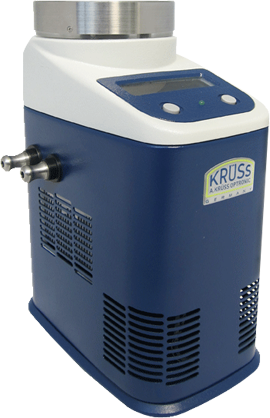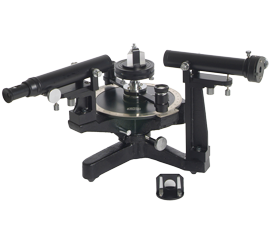Versatile, High-Performance Peltier Thermostat for the Laboratory
The PT31 model Peltier Thermostat is a flexible, compact and powerful unit used to control the temperature of refractometers, polarimeters, and other similar laboratory devices. The unit is robust and easy to operate and due to its compact size (only 140 x 80 x 210 mm) is ideal for locations where space is at a premium.
For prices and availability information on Peltier Thermostats for the Laboratory, please contact your nearest Krüss distributor, who will be delighted to help.
![]() For full technical specifications, please download the brochure here.
For full technical specifications, please download the brochure here.
How does Peltier heating and cooling work?
Peltier devices are familiar in many modern applications, but despite their ubiquity and the fact that the Peltier effect has been known for over 170 years, it remains a slightly mysterious and little understood phenomenon.
Common sense might indicate that it is possible to raise the temperature of an object by directly applying electricity, but not cool it. After all, adding energy always raises temperature, doesn’t it? In fact, the Peltier effect is a manifestation of the thermoelectric effect that occurs when two different conductors (usually metals) are in contact.
A basic thermocouple can be made by twisting together two different wires – say copper and zinc – in a simple circuit. When heat is applied, a small electrical current is generated. The process can also be made to work in the opposite sense, with applied electrical voltage being used to generate heat at the thermocouple. The surprising part of this experiment is that the polarity of the voltage determines whether the heat is ‘positive’ or ‘negative’ – ie, whether the thermocouple is heated or cooled.
The scientific explanation is that the applied voltage drives electrons and electron holes (the position where an electron could exist) to shift position, depending on the direction of the current. Driving electrons into lower-energy orbit releases energy which manifests as heat. Driving them into a higher-energy position absorbs energy from the environment, and the thermocouple consequently cools. In practice both things happen simultaneously, with heat effectively being pumped from one side of the thermocoupled circuit to the other.
Because the Peltier effect is dependent on the polarity of the driving current, the same solid-state device can both heat and cool. This is useful in many situations inside and outside the laboratory. One thing is worth remembering: the Peltier effect does not contravene the laws of thermodynamics, and regardless of whether local heating or cooling is created, the overall effect is of heat generation. The localised cooling created on one side of the Peltier device is always less than the localised heating on the other.































